Kenneth L. Gentry Jr.'s Blog, page 24
August 4, 2023
THE MERCHANTS IN REVELATION
PMW 2023-061 by Kenneth L. Gentry, Jr.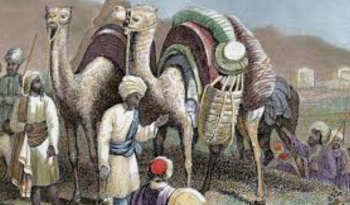
In that I believe Revelation is dealing primarily with God’s judgment of Israel and her temple, I must explain certain images that seem to contradict this view. The “merchants of the earth” in Revelation 18 is just one such passage.
Rome or Jerusalem?
In Revelation 18:3 we read: the merchants of the earth have become rich by the wealth of her sensuality. Beale and others see this as referring to Rome’s extravagant luxury through trade, and the temptations that flow from it throughout the empire (Beale 895-96; Mounce 326; Royalty passim; Witherington 226; Smalley 445).
Yet, I would point out that John states that these merchants, like the kings, are “of the Land [tēs gēs].” In Revelation 17 and 18 John is expanding on the bowl-plague judgments (Beale 847; TDNT 1:514; Boxall, 2002: 74-75). These fall upon “the Land” (tēs gēs, 16:1, 2) wherein we find “the great city” (16:19) Jerusalem (cp. 11:8), which is pejoratively called “Babylon” (16:19; 18:2, 10, 21). Thus, the geographical locus here is primarily in “the Land,” and particularly focused on Jerusalem (“Babylon”). These merchants are Jewish merchants because they are not only associated with the fall of Babylon-Jerusalem here but are actually called “your [i.e., Babylon’s] merchants [hoi emporoi sou]” (18:23c).
The Beast of Revelation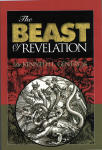
by Ken Gentry
A popularly written antidote to dispensational sensationalism and newspaper exegesis. Convincing biblical and historical evidence showing that the Beast was the Roman Emperor Nero Caesar, the first civil persecutor of the Church. The second half of the book shows Revelation’s date of writing, proving its composition as prior to the Fall of Jerusalem in A.D. 70. A thought-provoking treatment of a fascinating and confusing topic.
For more study materials, go to: KennethGentry.com
Several textual indicators suggest that John is focusing on Jerusalem rather than Rome (cp. Provan 1996: 94). (1) In this very Judaic book the language of religious defilement in 18:2 would suggest a Jewish city is in view. (2) Babylon’s double punishment reflects the OT prophetic witness against Jerusalem (18:6; see below). (3) The “great city” (18:10, 16, 18, 19, 21; cp. 18:2) was previously introduced as the place of the crucifixion (11:8). (4) In 18:24 the killing of the prophets by Babylon reflects a familiar sin of Jerusalem (Neh 9:26; cp. 1Ki 19:10, 14; 21:13; 2Ch 24:19, 21; 36:14-16; Isa 1:15; Jer 2:30; 25:4; 26:20-23). (5) The bowl judgments in Rev 16 are being expanded upon in Rev 17-18. In the latter bowls “Babylon the great” was distinguished from the cities of the nations (16:19). (6) Rev 16:21 recalls God’s judgment on OT Jerusalem (Eze 13:13).
Geographical Focus
Smalley (445) is surely wrong when translates emporoi tēs gēs as “worldly merchants,” stating that “the description speaks more of their secular attitude than their geographical location.” His interpretation is unlikely in that: (1) This would be a unique usage of tēs gēs in Revelation. (2) Smalley does not translate the other appearance of the phrase in the same verse as “worldly kings.” Of this phrase at 17:2 he speaks of “the rulers of the nations” and their alignment with the katoikountes tēn gēn, which are “people the world over” (Smalley 427). There he even states of the expression basileis tēs gēs: “the interpretation of which in Revelation seems to be consistent.”
(3) It would be more in keeping with Johannine thought patterns to refer to that which is “worldly” by using kosmos (e.g., 1Jn 2:15-17; 4:4-5; 5:4). But though the geographical Land is in view, I would point out its significance not as a mere geographical matter, but as a covenantal one (Vanderwaal, 10: 82-85; cf. Chilton, 10-20). (4) We must wonder why the shipmasters and sailors are not declared “worldly,” especially since they too “became rich by her wealth” and lament her passing similarly (18:17b-19).
Four Views on the Book of Revelation
(ed. by Marvin Pate)
Helpful presentation of four approaches to Revelation. Ken Gentry writes the chapter on the preterist approach to Revelation, which provides a 50 page survey of Revelation .
See more study materials at: www.KennethGentry.com
With the focus on Babylon-Jerusalem, this scene of wealth “in the Land” must be associated with the temple. We expect this from the evidence in 17:4-5 which shows the harlot clad in costly high priestly attire. After all, “the centre of the Judaean economy was Jerusalem, which dominated all the neighborhood [in the Land!] as the head towers above the body (J.W. 3:5:4)” (Goodman 1987: 51). Indeed, “the Jerusalem temple constituted an economic entity in its own right.” Rowland (in Horbury 1991: 195–96) notes: “the regular flow of income to the Temple from all parts of the empire led to the enrichment of this institution and those who ran it. As far as Jerusalem itself was concerned, the Temple provided a central feature of the local economy,” so that it was “the most significant part of the Jerusalem economy.” According to Hamilton (1964: 366), M. Rostovtzeff states that “the temple of Jerusalem continued to be the place where Jews, both rich and poor, kept their money.” We see indications that the temple was used by the Jews as a bank (1Ki 7:51; 2Ki 18:15; 16:8; 1Ch 9:26; 28:11–12; 2Ch 36:18; Neh 13:12–13; Ecclus 42:7; Tob 1:14; 19:5; 2 Macc 3:10–11).
The pious give their tithes to Jerusalem. In Tobit 1:6b-8 we read: “I would hurry off to Jerusalem with the first fruits of the crops and the firstlings of the flock, the tithes of the cattle, and the first shearings of the sheep. I would give these to the priests, the sons of Aaron, at the altar; likewise the tenth of the grain, wine, olive oil, pomegranates, figs, and the rest of the fruits to the sons of Levi who ministered at Jerusalem. Also for six years I would save up a second tenth in money and go and distribute it in Jerusalem. A third tenth I would give to the orphans and widows and to the converts who had attached themselves to Israel. I would bring it and give it to them in the third year, and we would eat it according to the ordinance decreed concerning it in the law of Moses.” Cicero speaks in disdain of this enormous outflow of funds to Jerusalem (Flac. 28:67; cf. Dio 61:7:2). The tractate Shekalim (“The Shekel Dues”) in the Mishnah and Tosefta discusses various aspects of the half-shekel payment by all Jews, including the surplus that fell to the temple (e.g., m. Shek. 2:3, 5).
Conclusion
This is only a small sampling of my argument that I will be presenting in my forthcoming commentary on Revelation, The Divorce of Israel. Lord willing, it will be out this Fall. In the 1750 page commentary I have plenty of room to flesh out my argument.
August 1, 2023
REVELATION AS A DIVORCE COURT DRAMA
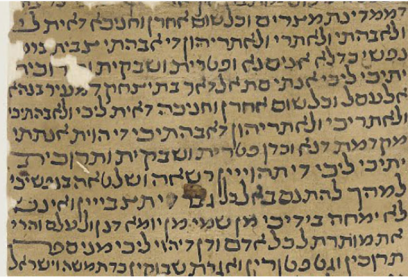 PMW 2023-060 by Kenneth L. Gentry, Jr.
PMW 2023-060 by Kenneth L. Gentry, Jr.
In my last two postings I engaged a brief series on John’s method of presenting his material in Revelation. I have noted thus that John is presenting his material as a drama. Though it is not intended as an acted drama, it is designed as a oral one — as I noted in my first article. But it is also cast as a forensic drama, which is set in a court. In this my final article, I will focus on the nature of the court in view.
We must remember that in the OT Israel is the covenantal wife of Jehovah God and he is her “husband” (Jer 31:32). Oftentimes the prophets mention the marital relation between God and Israel. Thus, when Israel chases after foreign gods she is committing spiritual “adultery” against her husband (Isa. 50:1b; Jer 3:20; Eze 16:31–32; Hos 1:2; 9:1, 10; Mal 2:11). The prophets then act as God’s lawyers, bringing a covenantal lawsuit against her with the hope of calling her back to her husband. When God chastens her with destruction or exile, the lawsuit pattern serves to demonstrate that “Yahweh’s punishment is righteous, and not an expression of arbitrary wrath” (Nielsen 33).

Keys to the Book of Revelation
(DVDs by Ken Gentry)
Provides the necessary keys for opening Revelation to a deeper and clearer understanding.
See more study materials at: www.KennethGentry.com
According to Nielsen (5, 9, 12) Gunkel sees lawsuits in Ps 50:7–13; 85; Isa 1:18–20; 3:13–15; 41:1ff; 41:21ff; 43:9ff; Jer 2:4–9; Hos 2:1ff; and Mic 6:1ff. Julien Harvey adds Jdg 2:1–5; Ernst Würthwein adds Mal 3:5. Herbert B. Huffman (1959: 289), who coins the phrase “covenant lawsuit,” adds Dt 32:1–25 which “has very close affinities in form and content” with the prophetic examples. We could also add: Am 2:4–16; Isa 5:1–7; 12:1; 15:10; Eze 17; 20:33–44; and Hos 4:1 (see the longer list in Bandy 2010: 4).
Unfortunately, the prophets’ legal work ultimately fails in that Israel resists their testimony. Her failure to hear God’s legal witness through his lawyer-prophets is the point of Jesus’ parable of the landowner (Mt 21:33–40), though he uses a horticultural rather than a judicial image to press the point. In this parable the Lord teaches that Israel continually abuses God’s prophets before his time (Mt 21:34–36) and that she will finally turn on the landowner’s son (Jesus) and kill him (Mt 21:37–39). This is also Stephen’s message to Israel in his sermon: “You men who are stiff-necked and uncircumcised in heart and ears are always resisting the Holy Spirit; you are doing just as your fathers did. Which one of the prophets did your fathers not persecute? And they killed those who had previously announced the coming of the Righteous One, whose betrayers and murderers you have now become” (Ac 7:51–52).
Returning to Revelation, John frames his forensic drama in such a way as to represent God’s judicial divorce decree against Israel for the sin by which she commits her final act of spiritual adultery: killing the Son (1:7; cp. 11:8). Regarding Revelation’s flow, Campbell (2004b: 92) argues that the latter chapters open “the way for Babylon’s repudiation as a faithless wife and for New Jerusalem’s betrothal.” He notes (2004b: 72n) of Revelation 17–20 that “the moment has come for irrevocable covenant divorce and for a (re)marriage.” This is significant in that he sees “Babylon” as Jerusalem (Campbell 2004a: 82, 100n). Thus, God’s wife finally rejects his love by crucifying his Son while crying out: “We have no king but Caesar” (Jn 19:15) and “His blood be on us and on our children” (Mt 27:25). Consequently, in Revelation 4 we see God sitting on his judicial throne to execute judgment against Israel.
Witherington (41, 42) comes close to what I believe to be the proper understanding of Revelation’s specific forensic significance when he states that John’s prophetic function is to bring a “covenant lawsuit.” But he wrongly frames it: “in this case it is the new covenant lawsuit.” Actually John is dramatically setting it up as the final old covenant lawsuit against Israel. Though Christ’s death (Lk 22:20; 1Co 11:25; Heb 12:24) legally secures and formally enacts the new covenant, AD 70 finally establishes and publically confirms it by the destruction of God’s house wherein he dwells with Israel as her husband.
In Revelation 5:1 God has in his hand a seven-sealed scroll. This represents his divorce certificate against Israel (as I will argue in detail in my forthcoming commentary, The Divorce of Israel). In God’s Law the punishment for adultery is death (Lev 20). So in Revelation 6–19 (with interludes and additional actions, e.g., 12:1–5; 13:1–10) we will discover Jerusalem appearing as the Babylonian harlot (dressed as the high priest, 17:4) and being judged under the righteous wrath and curse of God.
Then, after legally disposing of Israel-Jerusalem as an adulterous wife we read of the marriage supper of the Lamb (19:7, 9) in preparation for his taking a new bride, the new covenant Church. We then see the glorious bride-city coming down out of heaven adorned as a spotless virgin-bride for her husband — and designated a new Jerusalem (21:2, 9). Thus, this new spiritual Jerusalem replaces the old earthly Jerusalem (cp. Mt 23:37–24:2; Gal 4:22–31; Heb 12:18–29) because that was where the Lord is crucified (11:8). Fekkes (1990: 269) notes that “two of the principal dramatis personae which appear are the collective images of Harlot-Babylon and the Bride-New Jerusalem.” This fits well with the divorce court scheme. (I will demonstrate in the course of the commentary that “the interpretation of the Babylon spoken of in Revelation 16–18 conditions the reading of the whole book of Revelation itself, since Babylon, along with the Beast rising from the sea, is the target of John’s attacks” [Biguzzi 2006: 371])
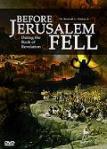
Before Jerusalem Fell Lecture
DVD by Ken Gentry
A summary of the evidence for Revelation’s early date. Helpful, succinct introduction to Revelation’s pre-AD 70 composition.
See more study materials at: www.KennethGentry.com
Thus, the theme of Revelation is the execution of God’s divorce decree against Israel, her subsequent capital punishment, followed by his turning to take a new bride, the Church, the new Israel of God. As Carrington (381) expresses it: “The old religion died in the year A.D. 70, and gave birth to two children; the elder was modern Judaism without temple or priest or sacrifice; the younger was Christianity which was proud of possessing all three.” I will fully develop this theme in the course of the commentary.
Conclusion
I hope you have found this series helpful. And I hope it has whetted your appetite for my commentary, which should be out this Fall (barring the rapture spoiling my theories).
July 28, 2023
REVELATION AS A COURT-ROOM DRAMA
PMW 2023-059 by Kenneth L. Gentry, Jr.
In my last posting I opened a brief series on John’s method of presenting his material in Revelation. Therein I noted that John is presenting his material as a drama. Though it is not intended as an acted drama, it is designed as a oral one — as I noted in my last article. Now we focus a little more tightly on the method of his drama.
Revelation’s Forensic Tone
Revelation is a moving drama with a specific theme: it is a courtroom drama employing language and images appropriate to the “lawcourt” (Caird 17–18). Witherington (14, 265) notes that “the judicial or forensic tone of Revelation has often been noted” by scholars — even in the seven oracles (Revelation 2–3). And “the majority of the book of Revelation . . . involves forensic rhetoric.” Fiorenza (1998: 47) provides more explanation: “the description of God’s judgment takes up such a large space in Rev. that its whole eschatological presentation culminates in judgment and salvation. Just as the seven visions of the plagues and the ‘small scroll’ climax in an announcement or a portrayal of judgment, so does the whole book.” Fekkes (78) agrees: “The subject of judgment is the single most dominant interest in Revelation, and accordingly the use of thematic analogues from the OT likewise finds its greatest development in this area.” DeSilva (2009: 89) points out that “Revelation’s focus on God’s judgment and the narration of the process of that judgment predisposes these scholars to see the text as forensic discourse. This is a story in which books are opened, witnesses step forward, charges are voiced, and justice meted out.”
Thus, as Smalley (1994: 107) well observes: “From start to finish, the dominant mood of Revelation is judgmental. Indeed, the total setting of the book is forensic; and it seems almost as if, as in John’s Gospel, the drama takes place in a court room.” In fact, he notes that “the forensic setting of Revelation is even more realistic” than that which famously appears in John’s Gospel (Smalley 30). And in that John takes up a prophetic mantle (see: XVI. “Prophetic Mantle”) to empower his drama, like the OT prophets of old “Revelation exhibits a lawsuit motif” (Bandy 2007: 3). This seems to be because John “sought to maintain some sense of continuity with the prophets” (Bandy 2010: 24). Indeed, the OT literary motifs and imagery related to lawsuits run throughout its corpus” (Bandy 2010:37) with “the bulk of lawsuit speeches” being “directed at Israel for the purpose of provoking the people of God to repentance by establishing the justness of ensuing judgment” (p. 56). In this regard Campbell (2004b: 87) well observes that “as a prophet, John’s call enrolls him de facto as a covenant prosecutor.” I will argue that his primary defendant is Israel (just as Jesus’ is in John’s Gospel).

Blessed Is He Who Reads: A Primer on the Book of Revelation
By Larry E. Ball
A basic survey of Revelation from an orthodox, evangelical, and Reformed preterist perspective. Ball understands John to be focusing on the destruction of Jerusalem and the temple in AD 70. Insightful. Easy to read.
For more Christian studies see: www.KennethGentry.com
The Central Throne
John especially emphasizes this forensic motif by placing God’s throne at the center of his drama: the throne is “the central symbol of the whole book” (Bauckham 1993b: 141–42). Consequently, “Revelation often punctuates the visionary narrative with scenes set in the heavenly court” (Aune 1:xcvii): 6:16; 7:9–17; 8:3; 11:16–18; 14:3; 16:17; 19:4–5; 20:11–15. Thus, John has “a central image, ‘the throne,’ which, beginning with 1:4 and ending with 22:3, gives unity to the message” (Krodel 56). Since John has “chosen to focus on matters forensic” he “uses the appropriate images, ideas, and approach for such a focus” (Witherington 17).
Ruiz (273–74) notes further that “enōpion tou theou, like enōpion tou thronou and similar expressions in Revelation, places us in the setting of the heavenly court, God’s throne room, from which he presides as pantokratōr and judge, receiving the prayers and praise of creation and executing justice. The forensic atmosphere in our text, already evident in 16:19 emnēsthē enōpion tou theou, is reinforced in 17:1, to krima tēs pornēs tēs megalēs, and echoed again in 18:5–6 and 19:2.” We find enōpion tou theou in 3:2; 8:2, 4; 9:13; 11:16; 12:10; 16:19; enōpion tou thronou in 1:4; 4:5; 6:10; 7:9; 8:3; 11:15; 14:3; 20:12; enōpion tou patros mou in 3:5; enōpion tou thronou kai enōpion tou arniou in 7:9; and enōpion tou arniou in 7:9.
Not only is God’s throne central to John’s majestic drama, but it appears in its introduction (1:4) and conclusion (22:3). Interestingly, of the sixty-two appearances of the word thronos in the NT, forty-seven of these are found in Revelation (see list in table below). One of the leading functions of divine throne scenes in Scripture and Judaic writings is for the purpose of judgment (Da 7:9–12; 1 En 25:3; 45:3; 47:3–4; 62:1–6; Apoc Mos 22:1–29:6; Mt 19:28–30//; 25:31–46), as we also clearly see in Revelation 20:4–6, 11–15 (Aune 2006: 52). Thus, when the Lamb receives the scroll in Revelation’s opening judgment vision (Revelation 4–5) he immediately begins breaking the scroll’s seals which in turn initiates judgments on earth (i.e., in the “Land” of Israel) (6:1ff). In Revelation the phrase “He / Him / One who sits on the throne” appears twelve times serving virtually as the name of God (4:2, 3, 9, 10; 5:1, 7, 13; 6:16; 7:10, 15; 19:4; 21:5). Of 6:9–10 Musvasvi (3) argues: “in view of the unfair human verdicts against his saints, God must ‘retry’ the case between them and the persecutor, so that the innocence of the saints and the guilt of the persecutor can be declared. The trial — a covenant lawsuit — involves an open review of the records of both defendant and plaintiff; and in line with the law of malicious witness, God reverses Babylon’s judgments.”
Judicial Terminology
Broader judicial terminology is quite strong in Revelation, for as Trites (1977: 161, 162) notes: it includes “words with forensic overtone” that are to “be given their full weight” in that “metaphors drawn from the lawcourt are never far from the author’s mind.” Note these words and phrases used in Revelation: true, trustworthy, recompense, just, avenge, confess, judge, witness, reward, punish, and more.

The Book of Revelation Made Easy
(by Ken Gentry)
Helpful introduction to Revelation presenting keys for interpreting. Also provides studies of basic issues in Revelation’s story-line.|
See more study materials at: www.KennethGentry.com
Thus, we should note that “Revelation is particularly rich in the vocabulary of witnesses,” with the noun form of “witness” occurring more frequently than in any other NT book (Shea 73). Clearly then, as Witherington (67) observes regarding this broad array of terms, “the use of legal language helps set the forensic rhetorical tone from the outset.” Focusing on an extremely important concept, Boring (44–45) comments that “John makes extensive use of the witness (mart-) word group, which derived from the courtroom. ‘Witness,’ ‘martyr,’ and ‘testimony’ preserve their legal connotations.” Hare (1967: 107) cites Beasley-Murray as noting that the word marturion can mean “testimony which renders the opponents guilty” in those passages that imply resistance to the gospel. As Trites (1973: 80) observes, the mart- word group does not yet require martyr-death, though martus “is definitely moving” toward that end in its “semantic development.”
Interestingly, in his opening John introduces himself in a forensically appropriate way: he “simply wrote affirmatively, boldly and voluntarily, I, John, as if he were testifying in court” (Buchanan 58). And John’s forensic interests are not confined simply to this particular book of his, for Bandy (2007: 2) notes that “the greatest distributional weight of marturia is found in the Johannine writings (fourteen times in the Gospel, seven times in the Epistles, and nine times in Revelation.). This suggests that witness is a prominent aspect in Johannine theology.”
Before the Throne
In this regard we should note that the opening verses introducing Revelation to the audience pictures the Holy Spirit as “seven Spirits who are before His throne” (1:4). Regarding this Spirit-before-the-throne, his audience must “hear what the Spirit says to the churches” (2:7, 11, 17, 29; 3:6, 13, 22). In ch 4 we see the vision which controls “what must take place after these things” (4:1; cp. 1:19) — and there God majestically sits on his heavenly throne (4:2–3, 9; 5:1, 7) above all creation (4:2,11; 5:13). Before him are crowned court officials on their lesser thrones, the “elders” (4:4), who in the OT engage judicial matters (Dt 21:19; 22:15; 25:7; Jos 20:4; Pr 31:23). And myriads of angels surround all of these (5:11; 7:11; 19:4). Then later when John begins closing out his drama, he brings us once again before God’s throne (22:1, 3), this time with the vindicated saints receiving their just reward (22:4–5, 12,14).
John’s drama is so structured that his audience in Asia Minor effectively “stands before the heavenly court and hears compelling testimonies” (Witherington 16). We should even understand the “martyrs” to be serving a legal function in that the foundational meaning of martus (2:13; 11:3; 17:6–8) is “one who testifies in legal matters, witness” (BAGD, 619; cp. TLNT, 2:447). We discover also in non-court situations that its verbal form (martureo) can mean to “swear to” the veracity of something (Jn 3:28; 12:17; 31:21). Interestingly, this verb “occurs most often in John” and is used of Christ’s “dispute with the ‘Jews’ or ‘Judeans’ who resist his message” and which bears “the features of a judicial proceeding, as the other judicial expressions indicate” (EDNT, 2:389, 390; cp. Caird, 17–18).
The judicial meaning of martus is quite evident in its application to Revelation’s leading witness: Christ the “faithful witness” (ho martus ho pistos) (1:5), “the faithful and true witness” (ho martus ho pistos kai alethinos) (3:14). In addition, as he opens his book John presents himself as one who “bore witness” (emarturēsen, 1:2); as he closes it, God’s angel legally “testifies” (marturēsai) of the things John writes (22:16; EDNT 2:391).
Judicial Documents
In that Revelation is presenting a court-drama, we should expect to find written documents appearing in important contexts. And we do, for “official documents are at the heart of the revelations in Rev. 4–21, which is only appropriate in a forensic setting, and it is in court that they are unsealed and read” (Witherington 16). The “book” in Revelation 5 is “of unparalleled significance” (Mounce, 129; cf. Smalley 127) in that it appears in the opening and controlling throne scene (Revelation 4–5) just preceding the unleashing of judgments (Revelation 6). This book reappears fully opened in Revelation 10 with a strong angel (an angelomorphic appearance of Christ) swearing a legal oath as he holds it (10:2, 5–6).
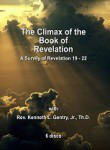 The Climax of the Book of Revelation (Rev 19-22)
The Climax of the Book of Revelation (Rev 19-22)
Six lectures on six DVDs that introduce Revelation as a whole, then focuses on its glorious conclusion. Provides an important, lengthy Introduction to Revelation also.
See more study materials at: www.KennethGentry.com
In addition we read of John’s commission to “write in a book what you see” (1:11; cp. 22:7, 9, 18). This writing project creates for us the Book of Revelation (1:1) with all of its judicial import. We hear several times of the “book of life” (3:5; 13:8; 17:8; 20:12, 15; 21:27) which is so important for encouraging the besieged and tempted church. We also see the heavenly books which record sinners’ earthly deeds for judgment day (20:12). Significantly, the books related to judgment are directly associated with God’s judicial throne (5:1, 5, 7–8; 20:11–12), as is the “book of life” which provides the Judge’s judgment that those listed therein are not guilty (20:12, 15, cp. 21:27).
Forensic Images
Not only do we see these overtly forensic images, but the thunder and lightning erupting around the throne (4:5) and resounding throughout the book (8:5; 10:3; 11:19; 14:2; 16:18; 19:16) are echoes from Ex 19:16; 20:18; and Dt 33:2 where Israel stands before God who is giving them his holy, covenant law (Ex 20) (Witherington 20; Bauckham 1993b: 8; Beale and Carson 2007: 1111). Even the earthquakes attending Revelation’s judgments (6:12; 8:5; 11:13, 19; 16:18) derive from the Sinai experience (Ex 19:18; cp. Jdg 5:5; Ps 68:8). “These reminiscences of Sinai are intended to impress on us that the throne of God rests upon an immutable and inexorable moral law” (Caird, 68).
In that authoritative witness is so important in court settings, John quickly establishes appropriate authority for his book. Though Revelation is primarily apocalyptically-charged prophecy, it includes a common epistolary element: “The book begins and concludes in typical epistolary manner” (Beale 39; cp. Bauckham 1993a: 3). In fact, “the rest of the book (1:4–22:21) has the framework of an ancient letter” ending with the closing benediction (AB 5:696; cp. IDB 4:59). We see this clearly at 1:4, which sounds a lot like Paul’s favorite greeting: “John to the seven churches that are in Asia: Grace to you and peace.” In an unusual move, however, John pre-empts the epistolary greeting by pointing first to the authority for his message: “The Revelation of Jesus Christ, which God gave Him to show to His bond-servants, the things which must shortly take place; and He sent and communicated it by His angel to His bond-servant John, who bore witness to the word of God and to the testimony of Jesus Christ, even to all that he saw” (1:1–2). By this he strongly asserts that “the origin of revelation is God’s throne room in the heavenly temple” which “becomes the dominating focus in order to underscore the divine, heavenly source of revelation sent to the seven churches” (Beale 38). John emphasizes that he is writing the “word of God” (1:2), not simply his own word.
Each of the oracles to the seven churches opens with Christ directly commanding him: “write” (2:1, 8, 12, 18; 3:1, 7, 14) his very words (chs 2–3). Each of these commands come with a “thus says” (tade legei), which “is part of the ‘write and send’ formula” that is a “variation of the OT ‘go and tell’ formulas” (Aune 120; cp. NLEK, 615; McKelvey 2003: 176). These prophetic messenger formulas occur over 250 times in the LXX when translating “thus says Yahweh” (Aune 1:121; cp. Beale, 229). Here in Revelation each ends with the divine obligation to “hear what the Spirit says” (2:7, 11, 17, 29; 3:6, 13, 22).
God’s authority in Revelation is accentuated by John’s being invited before and focusing on God’s throne (Revelation 4) which is set at the beginning of the judgments in Revelation (Revelation 6ff). In this he is like the prophets Micaiah, Isaiah, Ezekiel, and Daniel who see God upon his throne (1Ki 22:19; 2Ch 18:18; Isa 6:1–6; Eze 1:26; Dn 7:9–10, 13). Though John does not directly declare that he is a prophet, he is bringing “prophecy”as he indicates in his opening and concluding words (1:3; 22:7, 10, 18, 19) because he “prophesies” (10:11). He even acts out certain prophecies (10:8–11; 11:1–2), just as do several of God’s prophets (e.g., Jer 27–28; Eze 2:8–3:3; 4:1–17; cf. Ac 21:11). In several places John is “in the Spirit” (1:10; 4:2; 17:3; 21:10). In some places an angel carries him to the next portion of the revelation (17:1; 21:9). The angel of God underscores its legal authority by stating that “these words are faithful and true” (22:6). Because of the legal nature of Revelation, altering it will result in a curse (22:18–19).
But there is more! See you next time.
July 25, 2023
REVELATION AS A DRAMA
PMW 2023-058 by Kenneth L. Gentry, Jr. 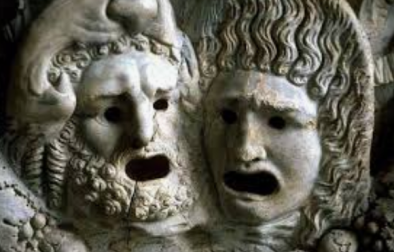
In this short series I will be providing insights into John’s method of presenting his material in Revelation. My commentary on Revelation should be out this Fall. [1] It will be titled: The Divorce of Israel: A Redemptive-historical Approach to Revelation. Thus, I understand Revelation as involving God’s divorcing of Israel as his (old covenant) wife as he takes a new bride (the new covenant church).
I will build the case for Revelation as a drama involving God’s relationship to Israel in this three-part series. So, let us begin by noting that it is presented as a drama.
Scholarly Notices
A growing number of scholars suggest that “the basic format of the book — a pageant of visions — draws on the theatrical model of a succession of scenes” (DBI 714). For instance, Smalley (1994: 105) suggests that “if we interpret the Apocalypse in its entirety as a drama, this is, given the nature of John’s material, a natural and uncomplicated exercise. Revelation lends itself to such an interpretation.”
In fact, many scholars recognize not only that “theatrical motifs and imagery pervade the book,” but that this “may show signs of influence from the conventions of classical drama” with its many scene changes (DBI, 714; cp. Wilcox 15–18; Smalley 109). Though John is a devout Jew, he is doing what other Jewish writers do after the third century BC, for “Jewish authors experimented with Greek genres — epic, tragedy,” and so forth (EDEJ 17).
Stage Issues
Revelation’s four most basic scene changes involve John’s in-Spirit experiences (see: 1:10; 4:2; 17:3; 21:20). John seems even to borrow “from the known setup of the Greco-Roman stage” with many “prop changes” such as the golden lampstands (ch 1), God’s throne (ch 4), the altars (ch 8), the ark of the covenant (ch 11), the sanctuary (chs 15–17), and the church enthroned (ch 20) (IBD 4:63). Consequently, he “was clearly heir to two cultural traditions — the Hebrew-Christian and the Greco-Roman — upon both of which he unhesitatingly drew” (IBD 4:62).
[image error]For more information and to order click here.
" data-image-caption="" data-medium-file="https://postmillennialismtoday.files...." data-large-file="https://postmillennialismtoday.files...." class="alignright size-full wp-image-209" src="https://postmillennialismtoday.files...." alt="Navigating the Book of Revelation: Special Studies on Important Issues" />Navigating the Book of Revelation (by Ken Gentry)
Technical studies on key issues in Revelation, including the seven-sealed scroll, the cast out temple, Jewish persecution of Christianity, the Babylonian Harlot, and more.
See more study materials at: www.KennethGentry.com
That Revelation is addressed to Christians in Asia Minor (rather than in Judea) may explain this approach, for this area is highly Romanized, noted for its wealth, and filled with imperial temples with their dramatic cult worship. It is certainly true that “Greek drama was in flower in Ephesus in the days of the Apostle John” (Pieters 104). Thus, John can frame his work in this manner in that his original “audience would have been . . . knowledgeable about Greco-Roman culture, in which they lived” (Royalty 18). After all, most scholars agree that John carefully aims his work to the real-life situations of his first-century audience in Asia Minor (1:4, 11; 2–3) so that he may be understood (1:3) (cf. Ramsay; Hemer; Worth).
A Qualification
I must qualify this observation, however. For while many scholars view Revelation as a drama, “none of them thinks that it was actually intended for performance in a theater” (Wainwright 143). Furthermore, it is not designed to be an acted drama, but an oral one “meant to be heard by the audience” (Witherington, 16; cp. Royalty, 127). Kirby (198) points out that “though the Revelation is a literary text, it nonetheless takes the form of a text intended ot be presented orally to an audience.” Thus, as Sandy (2002: 127) notes “hearing was precisely the way the first hearers received the message of the Apocalypse. . . . Hearing the Apocalypse enacted orally in one sitting gives hearers a distinctive sense of the message of the book.”
Thus, the blessing for reading and hearing it (1:3) is not only due to the practical means for accessing Revelation before printing presses made book production affordable. Rather John expressly designs its very language and structure for oral performance (Bauckham 1993a: 2; Barr 1986). Yet even still, we should not think that John intends Revelation to be a traveling production making its way through the big-city circuit for paid theatrical performance. It is more of a what we might call a “‘parlor’ drama to be read in private or at public assembly of a local church” (IBD 4:59).
Stage Props
Given Revelation’s extremely Jewish character, its abundant OT allusions, and its overarching Judaic-judgment theme, we should note that “the stage props for every act in this drama are adapted from the tabernacle and temple” (Bowman 25). Indeed, in Revelation “the theme of the Temple is of such great importance that it could be termed the ‘organizing principle’ of the text as a whole” (Ben-Daniel 4). John mentions the central sanctuary of the temple sixteen times (3:12; 7:14; 11:1, 2, 19; 14:15, 17; 15:5, 6, 8; 16:1, 17; 21:22). We also read of the outer court (11:2), the altar (11:1), the altar of sacrifice (6:9), the altar of incense (8:2, 4; 9:13; 14:18; 16:7), the golden lampstand (1:12, 13, 20; 2:1, 5; 11:4), harps (5:8; 14:2; 15:2), trumpets (chs 8–11), and libation bowls (chs 15–16).
Dramatic Orality
Fiorenza (1998: 22) speaks of “the evocative power and ‘musicality’ of its language, which was written to be read aloud and to be heard.” She (160) later notes that “the hearer of the text is impressed by its rhythmic and archaic language, by the repetition of sounds and words, and by the wealth of colors, voices, symbols, and image associations.” Once again reflecting the wider OT backdrop of Revelation, Safrai and Stern (1012) point out that the Hebrew prophets themselves tend to reflect Hebrew poetry’s archaic grammatical forms. The very sounds of some of John’s evocative words and expressions are designed for their emotive impact. In the original language, his word sounds, sentence cadence, and so forth heighten the dramatic effect. As a consequence, “reading the Apocalypse aloud, and hearing the Apocalypse read aloud, was effectual” (Callahan 1995: 460).
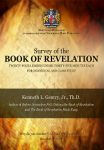
Survey of the Book of Revelation
(DVDs by Ken Gentry)
Twenty-four careful, down-to-earth lectures provide a basic introduction to and survey of the entire Book of Revelation. Professionally produced lectures of 30-35 minutes length.
See more study materials at: www.KennethGentry.com
What is more, “the people who first heard John’s Apocalypse and the other writings of the New Testament were able to perform and make sense of complex, sophisticated, and subtle oral presentations, especially stories. These performances appealed not merely to the eyes and ears but, as the Apocalypse itself demonstrates, to the visual, tactile, olfactory, and gustatory senses. Revelation was meant to be experienced as a whole” (Saunders 2003:123). Indeed, John’s work is so powerful that even he himself responds emotionally as he is caught up in it: he faints (1:17), weeps (5:4–5), becomes sick (10:10), is surprised (17:6–7), gets confused (19:10; 22:9), and so forth. Revelation is high-order, nerve-shattering oral drama.
Given the divine judgment theme of John’s drama, we repeatedly hear loud noises such as crashing thunder (4:5; 8:5; 10:3; 11:19; 16:18; 19:6) and booming voices (1:10, 15; 4:1; 5:2, 11–12; 6:1, 10; 7:2, 10; 8:13; 10:3; 11:12; 12:10; 14:2, 7, 9, 15, 18; 16:1, 17; 18:2; 19:1, 5, 17; 21:3). Resounding throughout are the weeping and mourning of the doomed (1:7; 18:9, 11, 15, 18–19), blaring trumpets (1:10; 4:1; 8:2, 6, 13; 9:14; 18:22), loud heavenly voices (5:11, 13; 6:1, 3, 5–7; 8:13; 9:13; 10:4, 8; 11:12; 12:10; 14:13; 16:1, 5, 7; 18:4; 19:1; 21:3; 22:17), the voices of multitudes (7:4; 19:6), the roar of rushing water (1:15; 14:2; 19:6), and various other sounds (e.g., 8:5; 9:9; 11:19; 16:18). And we can imagine the groaning sound of earthquakes (6:12; 8:5; 11:13; 16:18).
We can also hear what Scripture elsewhere calls “the sound of an army camp” (Eze 1:24), “a sound of chariots and a sound of horses” (2Ki 7:6), for in Revelation we read of: “the sound of chariots, of many horses rushing to battle (9:9) with the pounding of horse hooves (6:2–8; 9:7, 9, 16) and the clashing of swords (6:4, 8; 13:10). John even uses a dramatic silence amidst it all to accentuate the drama (8:1), and laments the lack of joyful sounds (18:22).
Resseguie (20) well observes that “Revelation is the ‘noisiest book’ in the New Testament” (cp. Smalley 211). Maier (91) cleverly comments: “The Apocalypse is the New Testament’s noisiest book. Playing with the popular misnomer, we might rename it the Book of Reverberations.” He continues: “in the ‘oral sensorium’ of the Apocalypse, as in other oral cultures, sounded words are enchantingly powerful” (Maier 96). Barr (1986: 243, 250) is surely correct: “The orality of the Apocalypse is an essential element of its hermeneutic. The original audience encountered it as an aural experience,” so that “this was surely a work intended for repeated performances.” This should not surprise in that, as Schlesinger (2008: 6) notes while citing D. Rhoads: “the overwhelming majority of the first century Christians (perhaps 95%) experienced their traditions — including gospels, letter, and apocalypses — only in some form of oral performance.”
As I will demonstrate throughout my forthcoming commentary, Revelation is mainly focusing on the soon-coming Jewish War with Rome and the destruction of her capital city and its beloved temple. And the sounds of that awful war are terrifying. Josephus even mentions them as one dramatic aspect of Israel’s woes and terror:
“The flame was also carried a long way, and made an echo, together with the groans of those that were slain; and because this hill was high, and the works at the temple were very great, one would have thought the whole city had been on fire. Nor can one imagine any thing either greater or more terrible than this noise; for there was at once a shout of the Roman legions, who were marching all together, and a sad clamor of the seditious, who were now surrounded with fire and sword. The people also that were left above were beaten back upon the enemy, and under a great consternation, and made sad moans at the calamity they were under; the multitude also that was in the city joined in this outcry with those that were upon the hill. And besides, many of those that were worn away by the famine, and their mouths almost closed, when they saw the fire of the holy house, they exerted their utmost strength, and brake out into groans and outcries again: Perea did also return the echo, as well as the mountains round about [the city,] and augmented the force of the entire noise.” (J.W. 6:5:1 §272–74)
“Now the trumpeters of the several Roman legions sounded together, and the army made a terrible shout; and the darts, as by order, flew so last, that they intercepted the light. However, Josephus’s men remembered the charges he had given them, they stopped their ears at the sounds.” (J.W. 3:7:27 §265–66)
“They then poured in over the parts of the wall that were thrown down, with a mighty sound of trumpets and noise of armor, and with a shout of the soldiers, and brake in by force upon those that were in the city.” (J.W. 4:1:4 §20)
Not only so but explanatory hymns appear at critical junctures in the visions to show that “the Apocalypse of John rests on the Greek’s symmetrical, theatrical, and dramatic performance — and hymns constitute a critical component in the narrative, theology plot” (Letseli 3). And just as hymns are an important component of Greek drama and imperial worship, Revelation’s “hymns clearly comment on and complement the visions and auditions of the book . . . and function as a sort of divine commentary, rather like a court reporter putting things in perspective” (Witherington 19). Filho (2002: 214) agrees noting that “its cultic terminology . . . shows the book has a liturgical interpretive framework.” Indeed, “most of the hymn and hymnic fragments in Revelation are placed in these literary settings” (Aune 1:xcvii). See they hymns of praise in 4:8, 11; 5:9–10, 12, 13; 7:10–12 ;11:5, 17–18; 12:10–12; 15:3–4; 16:5–7; and 19:1–8. This is true also in the well-known emperor-cult temple ritual in Asia Minor, for “hymn singing . . . represented a standard component of the worship” (Worth 1999a: 122).
Not only does John present us with an oral drama, but there is more. But next time!
NOTE
1. It should be in supermarkets by September. It will be in the kindling section next to the lighter fluid.
July 21, 2023
POSTMILLENNIAL UTOPIA?
 PMW 2023-057 by Kenneth L. Gentry, Jr.
PMW 2023-057 by Kenneth L. Gentry, Jr.
One PostmillenialWorldview read asks: “What is your response to the ‘Utopia’ charge leveled by (especially) Premills? This is a common charge levied against the postmillennialist. And the erstwhile postmil would do well to consider the matter.
Unfortunately, in the eschatological debate, postmillennialism is the easiest eschatological option to misconstrue. This is due to its going against the prevailing pessimistic expectations of the other millennial views. Hope for our historical future seems like Utopia to these folks. And as we know “Utopia” comes from the Greek: ou (“not”) and topos (“place”) and means “no-place.” So if postmillennialism is utopic, it is going no place.
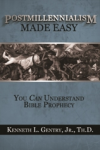
Postmillennialism Made Easy (by Ken Gentry)
Basic introduction to postmillennialism. Presents the essence of the postmillennial argument and answers the leading objections. And all in a succinct, introductory fashion.
See more study materials at: www.KennethGentry.com
Unfortunately, faulty hidden presuppositions often taint millennial arguments, even though the evangelical and reformed critics are seldom aware of these. In this regard I must dispel three common errors that infect their understanding of postmillennialism. Dismissing these will not make them postmillennialists, but it will bring them back to considering what postmillennialists actually believe.
First, postmillennialists do not assert universalism. The postmillennial hope is of a widespread, culturally influential presence of the true Christian faith. We believe that one day Christianity will be the rule rather than the exception to the rule in human affairs. However, we do not hold that all will be saved at any point in history. The world will always experience the presence of unbelievers. But in the future it will be more on the order of tares in a wheat field. Such a postmillennial understanding cannot lead to any utopia of an ideal society.
Second, postmillennialists do not believe in perfectionism. Not only will there always be the presence of unbelievers on earth — even at the height of the kingdom’s historical advance —, but the kingdom will always be composed of sinners. These will be sinners saved by grace, to be sure. But like any good, evangelical church, these saved sinners will never reach a state of spiritual perfection while on earth. That sanctification level awaits our leaving these mortal bodies and entering into the presence of God. Who would say any local church on earth is a utopia? And yet at the same time, who would not say they would rather the world be more like a church community of believers than like the streets of Detroit at night?
Third, postmillennialists do not engage in satisfactionism. By this we mean that we do not prefer the advancing kingdom on earth — even at its height! — to entering into the presence of our Lord and dwelling with him in eternity. We have a work to do. A work which God has called us to. But we never take our eyes off the glory of the eternal order and complete freedom from indwelling sin that we receive there. Thus, we can never be fully satisfied with even the highest advances in history. Thus, we do not prefer earthly dominion over consummational glory.
Charismatic Gift of Prophecy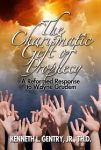
(by Kenneth Gentry)
A rebuttal to charismatic arguments for the gift of prophecy continuing in the church today. Demonstrates that all revelatory gifts have ceased as of the conclusion of the Apostolic era.
See more study materials at: www.KennethGentry.com
If the critics would do a “virus check” for these three latent errors, we could more accurately and fruitfully focus the debate.
I would point out a more accurate definition of postmillennialism to those making the utopia charges. Then we could get the debate on track. A useful working definition is found on my “Definition” page here at PostmillennialismWorldview.
July 18, 2023
OF PRETERISTS AND POSTMILLENNIALISTS (2)
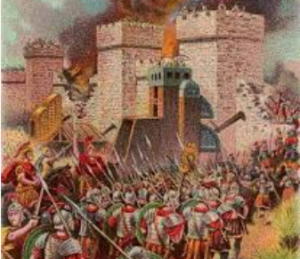 PMW 2023-056 by Kenneth L. Gentry, Jr.
PMW 2023-056 by Kenneth L. Gentry, Jr.
This is the second (and final) presentation of an interview conducted with me on preterism and postmillennialism.
Interviewer: Shifting to a related topic. Do preterist and non-preterist postmillennialists differ significantly in their reading of Matthew 24? Are there different interpretations of the two “days” even among preterists?
Gentry: Matthew 24 has been subjected to a fairly wide variety of interpretive approaches. Perhaps the more widely endorsed one holds that the Lord more or less jumbles together material on A.D. 70 and the Second Advent, in that A.D. 70 is a microcosmic precursor to the Second Advent. This view makes it difficult to sort out the verses in regard to which event the particular verses focus on. Among evangelical preterists two basic positions prevail: that 24:4–34 focus on A.D. 70 and 24:36ff focus on the Second Advent (this is my view, and the view presented by J. Marcellus Kik). The other view holds that all of Matthew 24–25 deals with A.D. 70.
Interviewer: Is that latter view — that all of Matthew 24 refers to A.D. 70 — what you have called “hyper-preterism,” or are there “regular” preterists that hold that interpretation of Matthew 24? How would their interpretation differ from the “hyper-preterist?”
Gentry: Although it is true that hyper-preterism holds that the entire Olivet Discourse speaks of A. D. 70, one’s position on that particular question does not necessarily lock him into the hyper-preterist heresy. The difference in interpretation at this specific point might be altogether negligible between an orthodox interpreter and a hyper-preterist. In fact, there are several verses where we find disagreement among orthodox interpreters and in which similarity to the hyper-preterist position may be noted. Where the fundamental differences would arise would be in other passages and on specific theological questions. If an interpreter is challenged to produce a passage supporting the Second Advent and he cannot produce one, then we have a serious problem. Or if he cannot affirm a physical resurrection at the end of history.
Have We Missed the Second Coming: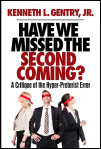
A Critique of the Hyper-preterist Error
by Ken Gentry
This book offers a brief introduction, summary, and critique of Hyper-preterism. Don’t let your church and Christian friends be blindfolded to this new error. To be forewarned is to be forearmed.
For more Christian educational materials: www.KennethGentry.com
Interviewer: What considerations in the text lead you to conclude that Jesus is distinguishing the two events in His prediction?
Gentry: Contextual evidence suggests that Christ is distinguishing two different comings. One coming is his coming upon Jerusalem in temporal judgment to end the old covenant era; the other is his coming at the Second Advent in final judgment to end history (24:36ff). These two “comings” are theologically related while historically distinct (and one of them speaks metaphorically of a “coming,” whereas the other speaks literally of a physical “coming”).
For example, by all appearance Matthew 24:34 functions as a concluding statement; it seems to end the preceding prophecy: “Truly I say to you, this generation will not pass away until all these things take place.” Consequently, the following events must relate to some episode not in “this generation.” That would suggest that all prophecies before verse 34 are to occur in “this generation.”
Interviewer: That seems to be borne out by the sense of urgency in the first section of the chapter.
Gentry: Yes. The character of the first section dramatically differs from that of the second. In the first section all is chaotic, laden with war and persecution. In the second section all appears tranquil, marrying and eating and drinking. What’s more, in the early section of Matthew 24 the time frame is short: “this generation.” In the following section (and through Matt. 25) the time frame is much longer: “But if that evil servant says in his heart, ‘My master is delaying his coming'” (Matt. 24:48). “But while the bridegroom was delayed, they all slumbered and slept” (Matt. 25:5). “After a long time the lord of those servants came and settled accounts with them” (Matt. 25:19). It is the very delay of the coming that tempts the church to forsake her watchfulness.
Interviewer: Many interpreters (of differing schools) lay great emphasis on the “signs” of the coming described in this passage. Can you comment on their significance?
Gentry: Before verse 34 Christ mentions signs pointing to the A.D. 70 coming: “wars and rumors of wars” (v. 6), “famines and earthquakes” (v. 7), “false prophets” (v. 11), and so forth. Accordingly, we may know the time of its approach; it is a predictable event. That’s Jesus whole point — be aware so you can act when the season of final danger is upon Jerusalem. Christ urges flight from the area (Matt. 24:16-20), clearly implying there will be time to flee.
On the other hand, after verse 34 signs are replaced by elements of surprise, indicating the coming in that section is unknown and therefore unpredictable: “they did not understand” (v. 39), “you do not know” (v. 42), “if the head of the house had known” (v. 43), “coming at an hour when you do not think He will” (v. 44), “he does not expect him” (v. 50), and “you do not know” (25:13). There is no warning — no opportunity for flight — for there can be no escape from that “day.” All befalls men suddenly (Matt. 24:48-51).
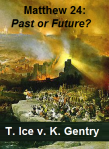 Great Tribulation: Past or Future?
Great Tribulation: Past or Future?
(Thomas Ice v. Ken Gentry)
Debate book on the nature and timing of the great tribulation. Both sides thoroughly cover the evidence they deem necessary, then interact with each other.
See more study materials at: www.KennethGentry.com
Another interesting point is that even Christ Himself does not claim to know the time of the Second Advent (v. 36). Yet in the earlier section He clearly knows the time of the A.D. 70 judgment, for he tells his disciples that certain signs may come but “the end is not yet” (v. 6). He also tells them these things will certainly happen in “this generation.”
Interviewer: Thank you so much, Dr. Gentry, for answering our questions. I’m sure our readers have been piqued with an appetite to study these questions in more depth. If they do, they may consult you comprehensive exposition of biblical postmillennialism, He Shall Have Dominion.

July 14, 2023
OF PRETERISTS AND POSTMILLENNIALISTS (1)
 PMW 2023-055 by Kenneth L. Gentry, Jr.
PMW 2023-055 by Kenneth L. Gentry, Jr.
Awhile back I was interviewed about the relationship of postmillennialism with preterism. Here is the interview. I hope it will provide some insights for you as you discuss such issues with your friends.
Interviewer: Dr. Gentry, when we speak of “schools” of interpretation or theological opinion — like “theonomists,” or “postmillennialists,” or “preterists” — there is a tendency to think of these groups in monolithic terms, as if all their proponents hew exactly to a single “party line.” In what ways, if any, does the contemporary revival of biblical postmillennialism differ from earlier versions within the Reformed tradition (e.g., Puritan postmillennialism)?
Gentry: You are correct that we need to be aware of a lack of lock-step unanimity in any millennial viewpoint, including postmillennialism. “Puritan postmillennialism” is so widely variant that for sorting through the various positions, I highly recommend reading Crawford Gribben, The Puritan Millennium: Literature & Theology 1550-1682 (Dublin, Ireland: Four Courts Press, 2000).
But in broad strokes we may distinguish between an historicist postmillennialism (held by the Puritans) as opposed to a preterist postmillennialism which is currently the more popular view. That is, the earlier Reformational forms of postmillennialism tended to interpret Revelation as a picture of all of church history, whereas the preterist view interprets it as dealing with issues directly relevant to the first centuries of the Christian church. But in the final analysis the fundamental reality of postmillennialism remains the same: the gospel will win the great majority of man before the return of Christ.
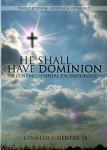
He Shall Have Dominion
(paperback by Kenneth Gentry)
A classic, thorough explanation and defense of postmillennialism (600+ pages). Complete with several chapters answering specific objections.
See more study materials at: www.KennethGentry.com
Interviewer: Were there any “preterists” among the older school of postmillennialism?
Gentry: Some of the historicist proponents were close to being preterists to a great degree. Westminster divine John Lightfoot (1658), though an historicist, held that Revelation 1:7 spoke of A.D. 70, and interpreted much of Revelation in this regard, though he saw it also developing later church history. Reformed preterists of the era included Westminster nominee Henry Hammond (1653), as well as Hugo Grotius (1630) and Jean LeClerc (1712).
Interviewer: R.J. Rushdoony, who contributed significantly to the revival of biblical postmillennialism in the last half of the 20th century was not a “preterist” — correct? Where did the “preterist” interpretation in contemporary postmillennialism get introduced to the stream?
Gentry: Rushdoony was an idealist. Of course, idealism can operate at the same time as preterism, if handled properly. After all, we believe that the historical statements of Scripture also establish paradigms for God’s acts among men. Contemporary reformed preterism arose with J. M. Kik in the early 1950s, was picked up by Jay Adams (The Time is at Hand, 1966), and promoted by Cornelis Vanderwaal (1978) and Greg Bahnsen (late 1970s).
Interviewer: Is there a hermeneutical or theological connection between postmillennialism and preterism or is it largely (may I say) coincidental? Are there preterist amillennials?
Gentry: Preterism is a hermeneutical tool; postmillennialism is an eschatological system. Preterism fits nicely with postmillennialism, but is not a necessary condition for it. Historically most postmillennialists were not preterists. And there are many non-postmillennial preterists, such as Jay Adams and Cornelis Vanderwaal. In fact, on Matthew 24 premillennial Puritan John Gill offers a preterist approach which I follow quite closely. Today some progressive dispensationalists are allowing for large preterist inroads into their system, for example, C. Marvin Pate and David Turner.
Interviewer: As a “preterist postmillennialist,” are you aware of any significant “in house” disagreements among those who share your same overall perspective on eschatology?
Gentry: Basically there are two competing schools of preterist interpretation (excluding the various and constantly mutating heretical hyper-preterist approaches): One school deems Revelation a picture of the Church’s struggles against two early enemies of the church: one religious, the other political, i.e., Judaic Israel and imperial Rome. The other branch sees the focus as concentrating primarily upon Israel, though noting a few places where John steps back for a broader political context and brings in Rome.
Interviewer: I understand you disagreed with Dr. Bahnsen on the interpretation of the book of Revelation.
Gentry: Dr. Bahnsen was my mentor in theology and exegesis. This was the one major area where he and I disagreed. He held the Israel and Rome view, I the Israel Only view. In fact, the last time we got together (about eight months before his death) he broached the question with me. We enjoyed about a one hour interchange on the subject. Actually, he enjoyed it; I sweated it out.
Interviewer: What did he consider to be the most significant indications that Revelation emphasizes both apostate Israel and pagan Rome?
Gentry: Given the complex nature of interpreting an entire book — especially one such as Revelation — the matter of discerning interpretive cues is both important and difficult. Some of the pro-Rome issues he presented to me were: (1) Revelation 10 (especially v. 11) seems to prepare John for a change of vision, transitioning from an Israel focus to a Roman focus. (2) The Harlot’s being seated on the seven hills (Rev. 17:9). (3) Her ruling over “kings of the earth” (Rev. 17:18). (4) Her relationship with “peoples and multitudes and nations and tongues” (Rev. 17:15). (5) The enormous wealth of the Harlot City (Rev. 18), especially coupled with indicators of prosperity through international trading (Rev. 18:10-19).
Interviewer: How would you respond to these issues? They seem quite compelling?
Gentry: Just briefly: (1) Revelation 10 does direct John to prophesy regarding Rome. And he does do so in Revelation 13 especially, but also in snippets here and there where the Beast appears. (2) The Harlot’s being seated on the seven hills seems to suggest her legal dependence upon Rome to get at Christ and the Christians, not her geographic position. Remember how the Jews force the hands of the Romans in the crucifixion account and in persecuting Christians in Acts.
(3) I understand “the earth” to signify “the Land,” i.e., Israel. The “kings of the earth” prophecy signifies Jerusalem’s own political resistance to Christ and Christianity. (4) The relationship to the “peoples” highlights the fact that the Diaspora spread Jews throughout Empire, allowing her to exercise her influence beyond Palestine. This universal presence of the Jews was an aggravation to non-Jews who detested the Jews for their standoffish rituals (see Philo and Suetonius).
(5) The wealth of the city points to the enormous wealth generated through the temple system by means of the head tax on Jews throughout the Empire, especially as the Temple was being refurbished since the days of Herod up until just a few years before it was destroyed. This wealth was a source of irritation to Roman writers such as Tacitus and Juvenal.
Interviewer: What are the most weighty considerations that lead you to the conclusion that John’s visions focus largely on Israel and Jerusalem?

House Divided: The Break-up of Dispensational Theology
By Greg L. Bahnsen and Kenneth L. Gentry, Jr.
This book demonstrates that dispensational theology has been shattered by its own defenders. They are no longer willing to defend the original system, and their drastic modifications have left it a broken shell.
See more study materials at: www.KennethGentry.com
Gentry: I am constrained by several key issues: (1) John insists that the events were to occur “soon” (e.g., Rev. 1:1, 3; 22:6, 10). (2) The theme of Revelation in 1:7 occurs almost immediately after the notation of nearness and seems to point to A.D. 70 as a judgment on the Jews who caused Christ’s death. (3) Revelation 1:7 is identical in sentiment and very close in form (combining Zech. 12 and Dan. 7:13) to Matthew 24:30. The Matthew verse is controlled by (a) references to the Temple’s destruction (24:2), (b) focus on Judea (24:16), and (c) the temporal indicator (24:34).
(4) Revelation is contrasting two cities: “Babylon” and the “new Jerusalem.” In fact, as Babylon falls, the new Jerusalem is established (Rev. 18; 21). That it is a “new” Jerusalem strongly suggests its opposition to the old, historical Jerusalem (cp. Gal. 4:25-26; see also: Heb. 12:18, 22). John paints Jerusalem as a “Babylon,” an enemy of God who causes her own temple’s destruction, much like Isaiah calls her “Sodom and Gomorrah” (Isa. 1). Therefore John presents God on his judicial throne (Rev. 4), presenting his divorce decree against Jerusalem (Rev. 5; cp. Jer. 3:1-8 noticing the harlot imagery, forehead, and divorce, capitally punishing her for adultery (Rev. 6-9, 16-19), then taking a new bride, the Church (Rev. 21-22).
To be continued . . . .
July 11, 2023
GOD IS PRO-LIFE
PMW 2023-054 by Kenneth L. Gentry, Jr.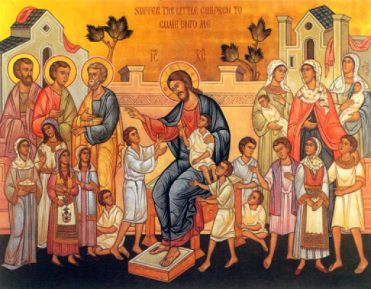
God not only creates human life, but he protects it. In Exodus 21:22–24 we see his dramatic protection of pre-born life. The ESV translation of this passage reads:
“When men strive together and hit a pregnant woman, so that her children come out, but there is no harm, the one who hit her shall surely be fined, as the woman’s husband shall impose on him, and he shall pay as the judges determine. But if there is harm, then you shall pay life for life, eye for eye, tooth for tooth, hand for hand, foot for foot, burn for burn, wound for wound, stripe for stripe.”
THE ENDING OF UNBORN LIFE
Setting aside the question of the applicability of God’s law today, we must note that from God’s perspective, unborn life is worthy of protection. This case law shows God’s protection of not only the pregnant woman, but of her unborn child. In the scenario outlined, the causing of either harm or death to the unborn child is shown to be a criminal act. Significantly, this case law presents the accidental killing of the unborn. By parity of reasoning, then, this means that if it were intentional (as in modern abortion) it would be an even more egregious act. Hence it clearly, though indirectly, affirms opposition to abortion.
Let us see how this is so.
In this case-law a pregnant woman is accidentally struck by a man who is in a fight with another man. Thus, the man involved is not intentionally attacking the woman herself. In the case presented, the striking of the woman results in her going into labor and delivering prematurely, for “her children come out.” We must note that the case law does not limit the effect of the potential “harm” only to the mother. For the Hebrew lacks a qualification restricting the harm “to the woman.” This means that the question of harm applies either to the pregnant woman or to her unborn child/children, because both parties are mentioned in the scenario.
After considering the financial and emotional costs of the complication involved in her enduring a premature delivery (Ex. 21:22b), this legislation goes on to add a further possibility. “But if there is harm” then the judicial penalty shall be “life for life, eye for eye,” etc. And once again, the Hebrew text does not limit this “to the woman”; consequently, it must apply to both.
Thus we see that even in the case of an accidental abortion, God deems the death of the unborn child as incurring the death penalty (at least in Old Testament Israel). Such is the value of pre-born, human life and the degree of protection God afforded it in his law
THE BEGINNING OF UNBORN LIFE
This should not surprise us, in that elsewhere Scripture shows that from the moment of conception the value of life in the womb is equated with the value of adult life.
For instance, in Job’s lament, he bemoans both the day he was born and the night he was conceived (Job 3:3). He declares that if he had died either on the day of his birth (v. 8) or the night of his conception (v. 9), then “I would have lain down and been quiet; I would have slept then, I would have been at rest, with kings and with counselors of the earth” (vv. 13–14a). That is, had he died even at conception, he had a soul that would have gone to the afterlife where deceased adult kings go.
This is further confirmed in David’s prayer of repentance in Psalm 51. David notes that he was a fully human being in a fallen state — even at conception: “Behold, I was brought forth in iniquity, and in sin my mother conceived me” (Psa. 51:5). A protoplasmic mass is not sinful; only a fully human being is.
Furthermore, we see in Scripture the high value placed on children in their conception (Gen. 30:1, 22; 1 Sam. 1:2, 9–11; Luke 1:7, 13–14) and in their birth (Ex. 23:25–26; Deut. 7:14). Children are deemed gifts from God (Gen. 33:5–6; 48:9; Ps. 127:3–5; 128:3; Is. 8:18).
Because of this, we cannot imagine that the loss of a conceived child in utero, as per the case-law scenario before us, would be passed over without comment. And it is not.
 Contemporary Theological Issues
Contemporary Theological Issues
by Ken Gentry (21 mp3 downloadables)
A Christian college course dealing with contemporary theological debates within the church. Covers several important topics of concern to Christians, including abortion, homosexuality, alcoholic beverages, and more
See more study materials at: www.KennethGentry.com
July 7, 2023
THE “CITIES OF THE NATIONS”?
 PMW 2023-054 by Kenneth L. Gentry, Jr.
PMW 2023-054 by Kenneth L. Gentry, Jr.
A reader had a question arise regarding a previous article (“Every Mountain was Moved”). I thought his query worthy of a bit more reflection than usually offered in a comment response. He noted regarding Revelation 16:19 that I stated “the cities of the nations” represents Gentile cities, setting them over against Jerusalem. He writes:
MY READER:
“They are distinguished from ‘the great city,’ showing that they are Gentile cities.
But which Gentile cities fell in AD 70? This is clearly simultaneous with the siege and fall of Jerusalem, taking place well after the year of the four emperors (Rev. 16:10-11) and the gathering of Roman troops (Rev. 16:12-16). So it can’t be referring to the Roman civil war. How was this fulfilled?”
MY REPLY:
The falling of “the cities of the nations” could well refer to the destruction caused by the empire-wide upheaval occurring in other cities during the time of the Jewish War. This involves peoples as distant as the Germans and the Gauls (Josephus, Jewish Wars 7:4:2 §76). The world itself is convulsed when God thunders down upon Israel. Even Rome fell into “great internal disorder” when “every part of the habitable earth under [the Romans] was in an unsettled and tottering condition” (J.W. 7:4:2 §79). “Now rebellion and civil war prevailed, not only over Judea, but in Italy also” (J.W. 4:9:9 §545). Tacitus (Hist. 1:2-3) speaks of the horrible state of affairs during the Roman civil wars:
“The history on which I am entering is that of a period rich in disasters, terrible with battles, torn by civil struggles, horrible even in peace. Four emperors fell by the sword; there were three civil wars, more foreign wars and often both at the same time. There was success in the East [i.e., the Jewish War], misfortune in the West. Illyricum was disturbed, the Gallic provinces wavering, Britain subdued and immediately let go. The Sarmatae and Suebi rose against us; the Dacians won fame by defeats inflicted and suffered; even the Parthians were almost roused to arms through the trickery of a pretended Nero. Moreover, Italy was distressed by disasters unknown before or returning after the lapse of ages. . . . Rome was devastated by conflagrations, in which her most ancient shrines were consumed and the very Capitol fired by citizens’ hands. Sacred rites were defiled; there were adulteries in high places. The sea was filled with exiles, its cliffs made foul with the bodies of the dead. In Rome there was more awful cruelty. High birth, wealth, the refusal or acceptance of office — all gave ground for accusations, and virtues caused the surest ruin. . . . Never was it more fully proved by awful disasters of the Roman people or by indubitable signs that gods care not for our safety, but for our punishment.”
Or, if we keep our focus in “the Land” (16:1-2), the fall of the “cities of the nations [“Gentiles,” tōn ethnōn]” could refer to the widespread destruction in Galilee which in Scripture is called “of the Gentiles [tōn ethnōn]” (Isa 9:1; Mt 4:15). First Macc 5 speaks of Galilee as composed largely of heathen peoples (esp. 1 Macc 5:15). As David Rhoades (Israel in Revolution: 6–74 C.E., 1975: 24, 25) notes, this is largely due to three historical facts:
(1) Israel is not “able to completely expel the original Canaanite inhabitants (Jdg 1:30-33; 4:2) and as a result Galilee tended to be racially intermixed.”
(2) “As a result of Assyrian conquests in the area of Damascus and Galilee in 732 BC by Tiglath-pileser ([2Ki] 15:29), more Gentiles were imported into the area while many of the Jewish inhabitants were deported. This naturally led to greater gentile influence and domination in Galilee” (Baker Encyclopedia of the Bible, 2:834).
(3) More recently Herod resettled many non-Jews into the area, “which tipped the balance of population in Palestine in favor of non-Jewish residents,” so that “during Herod’s reign, gentile culture was imported and developed in a massive way” (Rhoades 1976: 24–25, 26).
[image error]For more information and to order click here.
" data-image-caption="" data-medium-file="https://postmillennialismtoday.files...." data-large-file="https://postmillennialismtoday.files...." class="alignright size-full wp-image-209" src="https://postmillennialismtoday.files...." alt="Navigating the Book of Revelation: Special Studies on Important Issues" />Navigating the Book of Revelation (by Ken Gentry)
Technical studies on key issues in Revelation, including the seven-sealed scroll, the cast out temple, Jewish persecution of Christianity, the Babylonian Harlot, and more.
See more study materials at: www.KennethGentry.com
July 3, 2023
VOS ON 2 CORINTHIANS 5 (Part 3)
PMW 2023-053 by Geerhardus Vos
Gentry Introductory Note:
I am continuing a three-part presentation of Geerhardus Vos exegesis of 2 Corinthians 5. He wrote this in opposition to the arising of the new (in his time) liberal view that Paul’s theology changed over time. He originally believed in a physical resurrection of the dead, but eventually began to believe that at the moment of death believers received their new resurrection body as a spiritual body. This is the third and concluding article in the series. Now to Vos’ argument.
VOS’ PRESENTATION CONCLUDED
The difficult verse 3. We must now look for a moment at the passage as a whole, and in connection with this at the difficult verse 3. We do this in order to grasp the import of the entire section, and thus to gather in the fruit of our somewhat laborious exegesis. The passage connects with 2 Corinthians 4:17–18 by means of “for” (gar): “For we know that in case our earthly tent-house shall have been dissolved, we have a building from God,” etc. In 4:17–18 the “affliction” in the body works out an eternal weight of glory. This is likewise to be enjoyed in the body, since there, in the body, the “affliction” was borne. The future body thus appears from the outset as the bearer of an eternal weight of glory. The knowledge that such a new body shall be ours is basic for the hope of possessing and enjoying the certainty of this eternal glory. Without such a center the glory could not exist. Especially the description of this new body as a “house” admirably fits into this train of thought, because a house is not a mere place of shelter, but has attached to it the aesthetic conception of a center of manifestation for the glory of its inhabitant.
The next verse joins to this, by means of kai gar (“and for,” i.e., “for indeed”) as a further basis of the conviction expressed in the “we know” of verse 1, the circumstance that “we groan desiring to be clothed upon with our habitation from heaven. [1] Such an ardent, groaning longing affords a particularly strong ground for the assurance that a heavenly body must be appointed for us. This would not follow, of course, if the longing were of the nature of a purely-subjective sentiment or aspiration. In the present case it does follow, because, being worked in the believer by the Spirit, it becomes divinely prophetic of what is actually in store for him. The idea is that the Christian eagerly desires the succeeding of the heavenly body, if possible, without the intervening of any period of bodiless existence, so as to justify the conclusion that the Spirit’s hand is discernible in this.
The ardency and eagerness of the desire are guarantees of its divine origination. Paul continues, “in this we groan.” Some render by “in this (tent)” referring back to verse I. This construction is somewhat favored by verse 4 where the same thought is expressed as follows: “for we that are in this tent do groan.” It is quite possible, however, to render: “in this respect we groan, that we long to be clothed upon.”
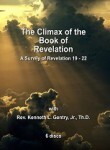 The Climax of the Book of Revelation (Rev 19-22)
The Climax of the Book of Revelation (Rev 19-22)
Six lectures on six DVDs that introduce Revelation as a whole, then focuses on its glorious conclusion. Provides an important, lengthy Introduction to Revelation also.
See more study materials at: www.KennethGentry.com
The foregoing brings us to the difficult verse 3. There are two points of uncertainty in the reading of this verse: (1) The conjunction introducing the sentence is in some MSS. ei ge (“if indeed,” or ei ge kai, “if indeed also”) and in others ei per (“if,” with the intensive particle)h. (2) The participle following this conjunction is read in some authorities endusamenoi (“be clothed”) in others ekdusamenoi(“put off clothing”). The evidence seems to be in favor of ei ge kai endusamenoi ou gumnoi eurethsometha (“if indeed also we shall be clothed and not found naked”). But it is extremely difficult, on any view taken of the passage as a whole, to fit these words into the context with an intelligible result.
The modern exegesis above criticized would take it as follows: the verse assigns the reason for the longing to be clothed upon at death. That is, having put the (new) body on we shall not then be found naked. For in that case there will be no interval of disembodied existence. So far as thought is concerned, and taken by itself, this would yield appropriate sense. The fatal objection to it is that it takes endusasthai in the same sense as belongs specifically to ependusasthai. Now the latter is used in verses 2 and 4 with pointed emphasis upon the epi, so as to compel the express understanding that it is not identical with endusasthai. Rather it is its opposite, if not in result, yet surely in method of procedure.
This being so, we may say that Paul, in order to express the thought attributed to him by this new exegesis, would in all likelihood have repeated the word ependusasthai in its participial form. He would have said “we long to be clothed upon, since having been clothed upon we shall not be found naked.” The verb which has but one prepositional prefix is distinguished from the doubly compound one in this very vital respect. It does not imply the guarantee for the avoidance of “nakedness,” inasmuch as it does not fix the point for the “putting on” as coinciding with the moment of death. We are bound, therefore, to take endusamenoi as different from ependusamenoi.
But what the clause means, if the distinction be insisted upon, as we believe it must, appears difficult to tell. Under these circumstances we prefer, we should not wrestle with the text in order to extract from it some sort of meaning, such as will at best induce half-acceptance. Rather we must see how far the difficulty admits of relief by adopting the other reading with ekdusamenoi (“put off clothing”) instead of endusamenoi (“be clothed”). [2] With this when combined with either ei ge kai or ei per (“although”), we can reach comparative clarity. There should be but one warrant always for changing the text, either by pure emendation, or through adoption of some other, perhaps less-strongly attested, reading. And that is the discovery that the adopted modification suddenly lets in light where before darkness prevailed. Such is the case here. Ei ge kai ekdusamenoi yields “if so be that also, having put off this body (i.e., having died), we shall not in the end be found naked, our “being clothed upon” taking place at the general resurrection. Taking the other conjunction ei per, we obtain the following rendering: “although even having put off this body (died) we shall not ultimately be found naked.”
Verse 4 takes up verse 2 again, elaborating further the same thought there expressed, whence in the same manner the verse is introduced by kai gar (“for also, for indeed”). The groaning here is caused by uncertainty as to the how or when. Nevertheless, it conveys assurance so far as the simple fact of ultimate attainment is concerned. The “being burdened” here by no means excludes the “we know” of verse 1, as it would do on the modern interpretation.
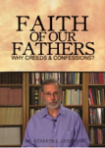
Faith of Our Fathers (DVDs by Ken Gentry)
Explains the point of creeds for those not familiar with their rationale.
Also defends their biblical warrant and practical usefulness for defending historic, Christian orthodoxy in our heterodox world.
See more study materials at: www.KennethGentry.com
Returning to verse 5. In connection with verse 5 we encountered a difficulty, left for the time to one side. Here is the place to consider it. It consisted in the problem, how the “this very thing” could be referred to the immediately preceding “clothed upon”? [3] How could Paul so objectively affirm that God had purposed and prepared him and his readers for “being clothed upon,” if at the same time he continued in uncertainty, as to whether he was to attain it or not? That for which God prepares believers can scarcely be considered a matter of doubt. And conversely, if the point was subject to doubt, Paul could scarcely affirm that God had prepared him and the others for it.
We suggested at the previous point a removal of the difficulty by making “this very thing” refer back not to the immediately preceding “clothed upon,” but to the general thought dominating the whole preceding context. And the thought is that in one way or another the Christian is sure to obtain a new body. The question remains, however, whether “this very thing” is not too pointed and emphatic for reference to this general idea. For this reason we now offer for consideration the reference of these words not to the “being clothed upon,” but to “we groan.” The “groaning” is on this view taken as the very thing for which God has prepared the believer. He causes it to issue from his heart, from whence also it has a prophetic significance. It thus becomes a confirmation of the assurance that he shall obtain the heavenly body.
FOOTNOTES
1. Kai gar is stronger than the simple gar: “for verily.”
2. Of course, it is not impossible for a skillful exegete, who finds himself in an impasse of this kind, to extort from the text some tolerable sense. He may do so by sacrificing all naturalness of expression to the one desire of making the words say anything at all. As an example of this sort of exegesis the following might be offered: We long to be clothed upon through reaching the parousia alive. Thus we would avoid the interval of nakedness, since also, after having “put on” at that point, we shall not henceforth be found naked at our entrance upon the eternal state. In other words, such is our ultimate destiny in any event. We may have to attain it through death, and subsequent nakedness and the ultimate putting on of the body, rather than by instantaneous putting of the new over the old. Nevertheless, we cannot help continue longing for the pre-death parousia-investment, because that reaches the eventual goal in the shortest and easiest manner. This exegesis, it will be perceived, separates kai (“and”) from the ei ge (“if indeed”) and joins kai closely to endusamenoi (“being clothed”). It certainly is ingenious; but is it not too ingenious to invite confident acceptance?
3. The difficulty here considered is, it will be observed, a difficulty which the old and new exegesis equally encounter. Both must admit that in v. 4 Paul expresses a doubt, and seek some reconciliation with the “we know” of v. 1.
THE TWO AGES AND OLIVET (advertisement)
I am currently researching a study of the Two-Age structure of redemptive history. My starting point is based on the disciples’ questions to Jesus in Matthew 24:3. Much confusion reigns among those unacquainted with the Two-Age analysis of history, which was promoted by Jesus (Matt. 12:32; Mark 10:29-30) and by Paul (Gal. 1:4; Eph. 1:21). The Two Ages are not the old covenant and the new covenant, but world history since the fall and the consummate order following the Second Coming and the Final Judgment.
If you would like to support me in my research, I invite you to consider giving a tax-deductible contribution to my research and writing ministry: GoodBirth Ministries. Your help is much appreciated!
Kenneth L. Gentry Jr.'s Blog
- Kenneth L. Gentry Jr.'s profile
- 85 followers



